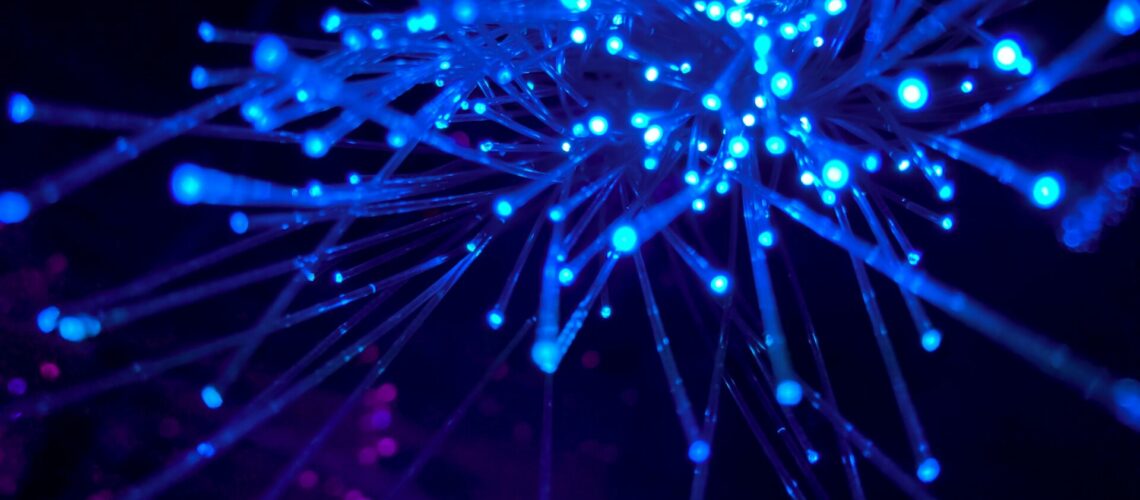The transition from traditional home construction to the integration of smart technology has radically transformed our living spaces. As we evolve from bricks to bytes, there’s an ever-increasing emphasis on the integration of Internet of Things (IoT) devices in contemporary residential construction. This leap not only redefines our notion of ‘home’ but also paves the way for a more efficient, sustainable, and convenient living environment. From thermostats to security systems, IoT brings technology’s touch into every corner of our homes, ensuring a seamless blend of convenience and functionality.
Why the Integration of IoT Matters
Long gone are the days when a house was just a physical structure to keep us sheltered from the elements. Today, modern homes are dynamic entities that can interact, learn, and adapt. Geoffrey Allen Wall, a leading expert from Vancouver, British Columbia, emphasizes the significance of this change. According to Wall, “The introduction of IoT devices in home construction is not just about luxury or convenience. It’s about creating a living space that’s responsive and adaptive, which ultimately enhances the quality of life.” With the power of interconnectivity, homes can now communicate with its residents, ensuring a tailored living experience that caters to individual preferences and needs.
IoT devices collect data, learn from it, and act upon it. For instance, smart thermostats can analyze your daily routines and adjust heating or cooling accordingly. These devices can detect when you’re home, when you’re away, and even anticipate when you’re about to arrive, ensuring the optimum temperature setting for your comfort while optimizing energy consumption. The magic lies in the device’s ability to transform this data into actionable insights, turning homes into proactive contributors to our well-being.
The Key IoT Devices in Home Construction
- Smart Lighting Systems: Beyond just turning on or off, these systems can adjust the brightness based on the time of day, presence of people, and even the kind of activity happening in a room. By tuning into a homeowner’s habits, they can significantly contribute to energy conservation.
- Energy Management Systems: These can monitor and control energy consumption in real-time, optimizing the use of appliances and ensuring that no energy is wasted. As we become more conscious of our carbon footprints, these systems become integral in promoting sustainable living.
- Advanced Security Systems: Doorbell cameras, smart locks, and other security IoT devices can provide homeowners with peace of mind, ensuring their premises are safe and secure. With real-time notifications and remote monitoring, homeowners can always be in the loop, irrespective of their location.
- Water Management Systems: Detect leaks, monitor usage, and even purify water using smart systems, reducing waste and ensuring efficiency. Given the increasing importance of water conservation, these systems not only save money but also contribute to a crucial global cause.
The Challenges and the Opportunities
Integrating IoT devices in construction is not without its challenges. There are issues related to compatibility, the need for regular updates, and concerns about data privacy and security. Moreover, as Geoffrey Allen Wall of Vancouver, British Columbia, rightly points out, “It’s not enough to just integrate a device; homeowners need to be educated about their use and potential, turning them from passive users to active participants in the smart home ecosystem.” Yet, every challenge brings an opportunity. For developers and constructors, the integration of IoT can be a unique selling proposition, ensuring their properties are future-proof.
However, these challenges are accompanied by a plethora of opportunities. IoT integration in residential construction can significantly boost the property’s value. Furthermore, as more devices are interconnected, the potential for creating a seamless, holistic living experience becomes tangible. Homeowners can look forward to reduced utility bills, enhanced security, and a home that resonates with their lifestyle and needs. This interconnectivity can redefine community living, forging bonds between neighbors through shared resources and platforms.
Preparing for the Future of Construction
It’s evident that the integration of IoT devices in residential construction is not a fleeting trend but the future. As technology continues to evolve, it’s crucial for constructors, developers, and homeowners to stay abreast of the latest advancements. Geoffrey Allen Wall of Vancouver, British Columbia, believes that “as we move forward, the line between construction and technology will blur even more, leading to homes that are not just built for us but with us.” The fusion of tech and construction requires a blend of skills, both old and new. Continuous learning, adaptation, and innovation will be at the forefront of this evolution.
To prepare for this future, constructors and developers should prioritize:
- Training and Skill Development: Ensure that the team is equipped with the necessary skills to integrate and troubleshoot IoT devices. Continuous training will be key to staying relevant in this rapidly changing landscape.
- User-Centric Approach: Always prioritize the needs and preferences of the homeowners. After all, the primary purpose of these integrations is to enhance their quality of life. A deep understanding of end-users will result in designs that truly resonate.
- Collaboration: Consider partnering with tech firms and IoT device manufacturers. These collaborations can lead to better integrations and more innovative solutions. With combined expertise, the potential for groundbreaking innovations is limitless.
In Conclusion
The transition from bricks to bytes signifies more than just the infusion of technology into our homes. It represents a shift in mindset, where our homes are seen as evolving entities, shaped not just by bricks and mortar but by bytes and data. As pioneers like Geoffrey Allen Wall continue to lead the way, the future of residential construction looks promising, smart, and incredibly exciting. The fusion of the physical and digital worlds promises homes that are not only responsive but also proactive, creating living spaces that truly cater to the next generation’s aspirations.

